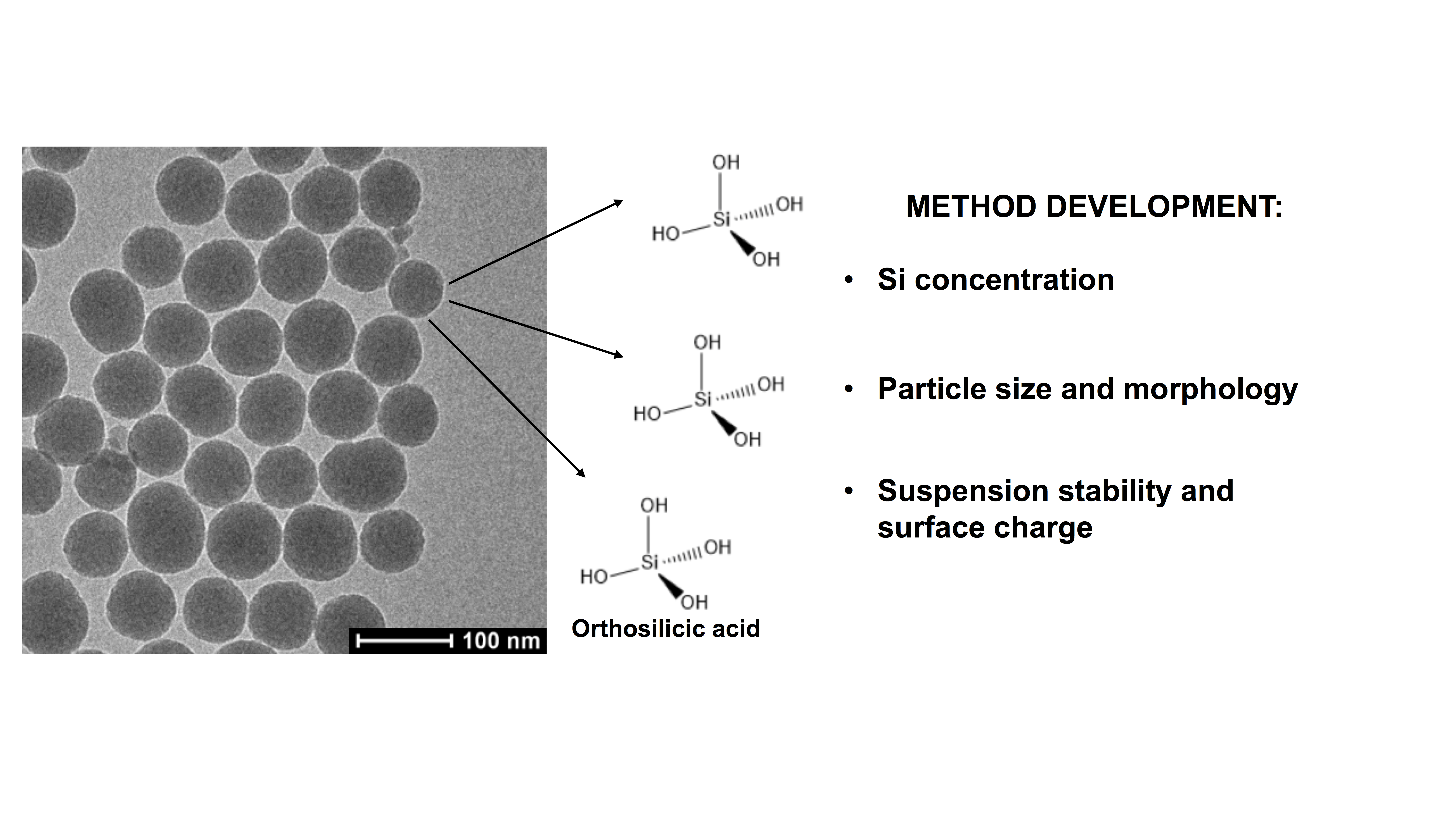Multidisciplinary Method Development to Characterize and Quantify SiO2 Nanoparticle Degradation in Complex Matrices
Silica nanoparticles (SiO2-NPs) and in general siliceous nanomaterials are used in a broad range of commercial products including foodstuffs and cosmetics. Recent research explores the use of SiO2-NPs as a delivery vehicle for molecules in plants[1], which could be interesting for nano-agrochemicals, under the reservation that such SiO2 nanomaterials degrade easily[2]. Fundamental knowledge for the development of such agricultural applications is needed to understand the SiO2-NP behavior in the presence of plants and soil. Different parameters can influence the SiO2-NP dissolution in aqueous solutions, or the degradation in biological/environmental media. Particle shape and size, degree of aggregation, porosity, pores size, morphology, and surface functionalization as well as mucilage and exudates of organisms can govern the dissolution/degradation rates [3]. We will present initial results of an experimental interdisciplinary approach to characterize and quantify the differential dissolution of SiO2 NPs in media with increasing complexity, from simple aqueous solution to the highly complex soil matrix.

[1] H. I. Hussain, Z. Yi, J. E. Rookes, L. X. Kong, D. M. Cahill, Journal of Nanoparticle Research 2013, 15, 1676.
[2] F. Schwab, G. Zhai, M. Kern, A. Turner, J. L. Schnoor, M. R. Wiesner, Nanotoxicology 2016, 10, 257-278.
[3] J. G. Croissant, Y. Fatieiev, N. M. Khashab, Advanced Materials 2017, 29.